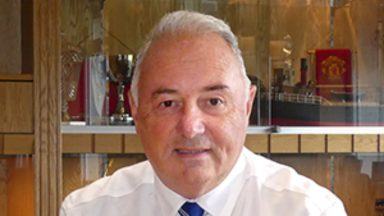A rugby player’s risk of developing an incurable brain disease uniquely associated with repeated head impacts is relative to the length of their career, a new study indicates.
Each additional year of playing was found to increase the risk of chronic traumatic encephalopathy (CTE) by 14%, in a study of the brains of 31 former players whose average career length was 18 years.
CTE can only be diagnosed post-mortem, and to date the only recognised risk factor for CTE is traumatic brain injury and repeated head impact exposure.
The study, published in Acta Neuropathologica in the week of the Rugby World Cup final, found CTE present in 21 of the 31 brains (68%) donated to research institutes in the United States, the United Kingdom and Australia.
Cases with CTE averaged a career length of 21.5 years, while in those without CTE the average was 12.1 years.
The study’s lead author Professor Willie Stewart, of the University of Glasgow, said: “In this study, we have combined the experience and expertise of three leading international brain banks to look at CTE in former rugby players.
“These results provide new evidence regarding the association between rugby union participation and CTE.
“Specifically, our data shows risk is linked to length of rugby career, with every extra year of play increasing risk.
“Based on this it is imperative that the sport’s regulators reduce exposure to repeated head impacts in match play and in training to reduce risk of this otherwise preventable contact sport related neurodegenerative disease.”
Twenty-three of the players played at amateur level only, while eight also played at the elite level. The study found no correlation between the level the individual had played at and an increased risk of CTE, nor between whether they played as a forward or a back.
World Rugby is exploring ways to mitigate the risk of concussion and improve how diagnosed or suspected concussions are managed.
The governing body’s executive board has recommended that unions participate in an opt-in global trial of lowering the tackle height in the community game to below the sternum – also known as a “belly tackle”.
World Rugby also promotes a “recognise and remove” approach to dealing with concussion in the amateur game, while it has detailed return-to-play protocols at that level and in the elite game.
A group of former professional and amateur players diagnosed with early-onset dementia are involved in legal action against World Rugby, the Rugby Football Union and the Welsh Rugby Union.
The players claim the governing bodies were negligent in that they failed to take reasonable action to protect them from permanent injury caused by repetitive concussive and sub-concussive blows.
A World Rugby spokesperson said: “World Rugby is aware of the findings from the University of Glasgow study and we are committed to always being informed by the latest science.
“Our Independent Concussion Working Group recently met with Boston University representatives, including Professor Ann McKee, alongside other world leading brain health experts, to continue our dialogue on how we can make the game safer for the whole rugby family.
“What all the experts told our Independent Concussion Working Group was that we should continue to reduce the number of head impacts, and that is exactly what we will do.
“World Rugby will never stand still when it comes to protecting players’ brain health, which is why community players around the globe are taking part in trials of a lower tackle height this season.
“It is also why we have rolled out the use of world leading smart mouthguard technology in WXV, our new elite women’s competition, and from 2024 all elite competitions using the Head Injury Assessment will use smart mouthguards, in addition to the current independent doctors and in-game video footage to ensure that players are receiving the best possible care.”
Follow STV News on WhatsApp
Scan the QR code on your mobile device for all the latest news from around the country






























